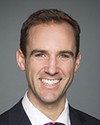Again, what I would do is commend to the committee the 10 criteria that were identified by the royal commission in 1985 for judging electoral systems. When the New Zealand Electoral Commission came to reviewing MMP in 2012, we referred to those, and we found them to continue to be relevant. They are available as appendix B in the 2012 report that has been provided to the committee.
They include things like fairness between political parties, recognizing the fact that political parties are an important feature of modern politics, although the first-past-the-post system, for example, operates as though they don't exist. Another is effective representation of minority and special interest groups. In the New Zealand context, that means effective Maori representation.
Another is political integration, the extent to which the system brings together diverse opinions. Others include effective representation of constituents, effective voter participation, effective government, effective Parliament, effective parties, and the legitimacy of the system.
Those are just briefly the 10 criteria that the New Zealand Royal Commission used to judge the systems that it considered, and it judged that for the New Zealand context and tradition, MMP was an appropriate and preferable alternative to what we then had.





